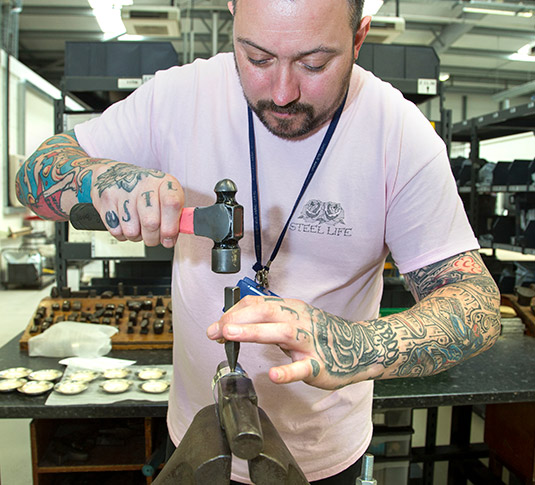History of Hallmarking
All our silver animal figurines and silver items are hallmarked at the Sheffield assay office.

The Oldest Form of Consumer Protection – A Brief History.
In an age where consumer protection and rights are a key concern for most present-day manufacturers it is fascinating to note that the hallmark is, in fact, one of the oldest forms of consumer protection that exists. The history of the hallmark dates back as far 1300, when a statute of Edward I established the assaying (test and analysis) and marking of precious metals. The original aim of the introduction of hallmarking was enlightened – to protect the public against fraud and the trader against unfair competition.
So why was it felt necessary to introduce hallmarking?
When jewellery and silverware are manufactured, precious metals are not used in their pure form, as they are too soft. Gold, Silver, and Platinum are always alloyed with copper or other metals to create an alloy that is more suitable to the requirements of the jewellery. Such an alloy needs to be strong, workable, yet still attractive. However, it can be impossible for even an expert to determine the quality and fineness of precious metal items by sight or touch alone.
In addition, unscrupulous manufacturers had realised that there was an opportunity for extra profit if they reduced the precious metal content of an alloy at the manufacturing stage. For example, an article made completely from base metal could be made to look like something else altogether by plating it with a thin coat of gold or silver!
In the 1300’s, the ability to manufacture in high volumes was limited but in the present day, high volume manufacturing of certain items is a reality, making the need for compulsory, independent testing as important as it was in 1300.
In the early days of hallmarking, the Statute of 1300 empowered the Wardens of the Company of Goldsmiths in London to go out to workshops in the City and assay silver and gold. Initially, only silver that met the required standard was marked – with the symbol of the leopard’s head which is still the mark of the London Assay Office today. Over time, gold came to be marked in the same way as silver.
In 1363, the maker’s mark was added to the hallmark. The maker’s or Sponsors mark tells the buyer or collector who made the piece – or more commonly who submitted it to be hallmarked, and ensures traceability of the piece.
At first, most maker’s marks were pictorial but as literacy rates improved the method of using initials combined with a punched ‘surround’; shape was introduced.
It wasn’t until 1478 that the Wardens of Goldsmiths set themselves up in Goldsmiths Hall in London, thus creating the first formal base for assay work. A salaried assayer was employed to test and mark items, leading to the introduction of the date letter as an additional mark, a means of identifying the assayer by date and make successive assayers accountable for their work.
For almost 300 years, Goldsmiths Hall had the monopoly on the assay work and it wasn’t until 1773 that Sheffield Assay Office was founded by an Act of Parliament. The silversmiths of both Sheffield and Birmingham felt strongly that the vigour and volume of their trade warranted an Assay Office of
their own and lobbied Parliament until they were finally rewarded by the Hallmarking Act 1773.